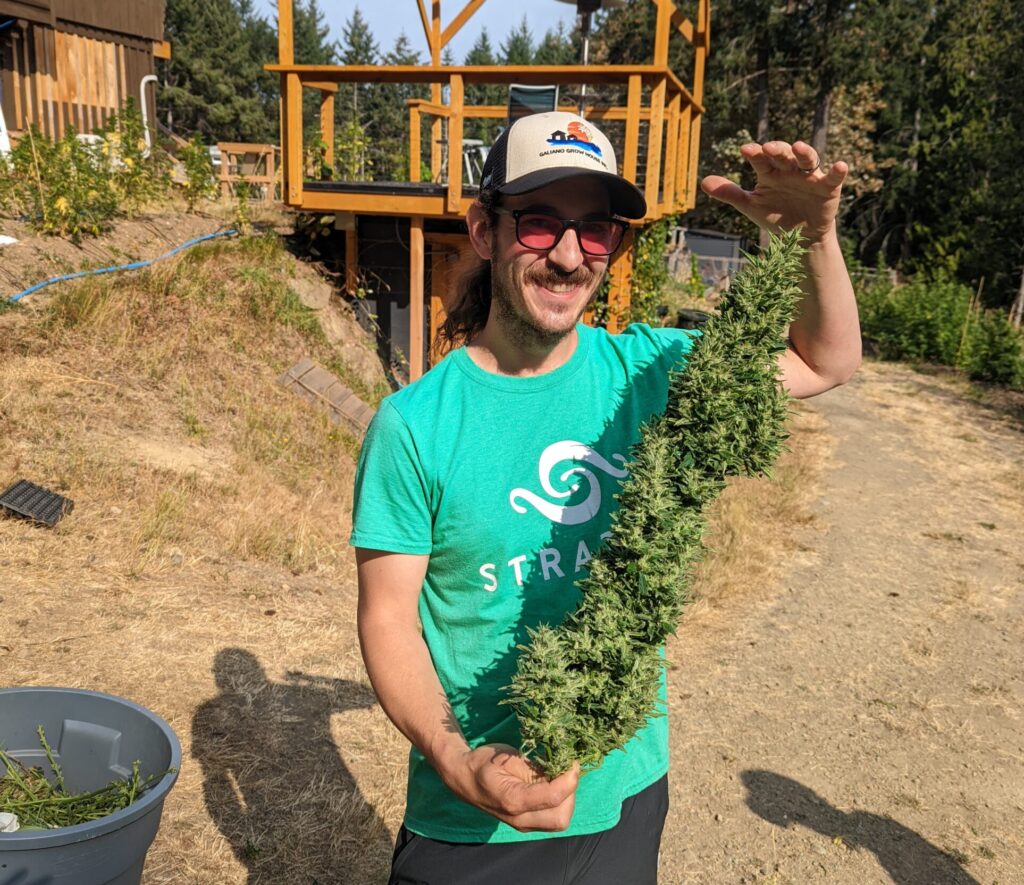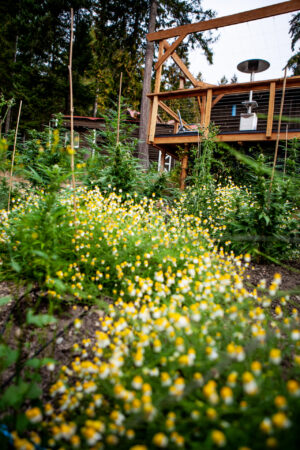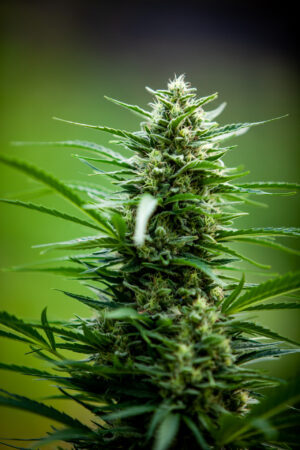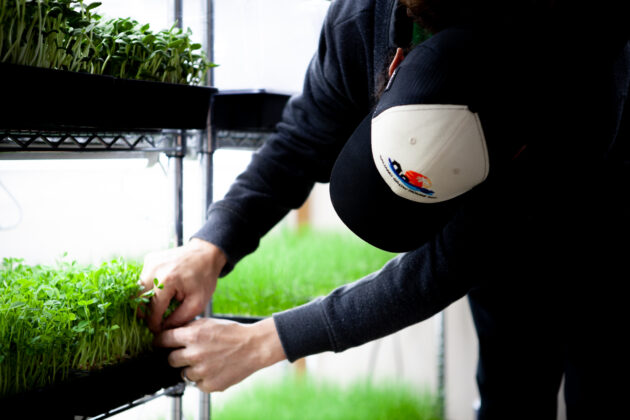
Features
Opinion
Cultivation
Opinion
Production
Galiano Grow House: West Coast hemp production
Victoria, B.C.-born farmer and entrepreneur Adam Clarke chronicles hemp production on Galiano Island in the first cultivation column of the year.
January 27, 2023 By Adam Clarke
 Farmer Clarke harvesting hemp
Farmer Clarke harvesting hemp Galiano Grow House is located on Galiano Island – a small Southern Gulf Island between Victoria and Vancouver on Canada’s West Coast.
Cannabis (including hemp) has been a polarizing topic for many years. However, as time goes on, I have started to see more and more of the stigmatization being removed.
We started growing hemp on Galiano near the beginning of 2021, having now finished our second outdoor crop. It has been a great experience growing hemp – enjoying the process and the fun that comes with it.
We have been aiming to grow a more boutique style of hemp to be used in the production of hash and in the pre-roll flower market.
All of our crops are grown using certified hemp seed, as required by regulations. With the changes in regulations over the last few years, more hemp genetics have entered the regulated Canadian market with various options for plant size and shape.
Licensing logistics
For those interested, getting a hemp license in Canada requires an application, some paperwork and 30-90 days to hear back from the government. The simple process requires a CTLS account, a site plan and your location for planting.
The regulations for farmers of hemp are quite easy to abide by, assuming you are not wanting to be a seed breeder. Becoming a seed breeder requires more education and a more stringent testing procedure for your products.
Industrial hemp strains
We have been playing with many different options for plant strain, however we have always been focused on CBD content for use within the therapeutic market. We are fortunate in Canada the majority of the new strains are high in CBD and terpenes – these plants are well suited to the Canadian growing environment and are also quite fun to grow.
Most strains purchased in Canada have been bred to be approximately 30:1 CBD: THC. This would be considered a new hybrid industrial hemp strain and stays under the 0.3 per cent THC limit in the Canadian hemp market.
Within the strains available exist many different sizes, shapes and photo periods, much like the traditional THC cannabis market. We typically grow three different strains (or more) per year, depending on harvest timing and labour.

Photo: Adam Clarke
In a normal year we are able to stagger our harvests, running three main strain types: A full auto flower called “Ambassador,” a quarter auto “Umpqua,” and a standard photo period CBF1.
All of our seeds are purchased in Canada from the breeder direct, or the import permit holder in Canada. In order to purchase this seed, you must be an industrial hemp license holder with specific authorizations.
We procure the majority of our seeds from Verve Seed Solutions, having had great success with them.
Health Canada also publishes a new list once or twice a year with all strains allowed to be grown.
Outdoor cultivation
Generally we plant our hemp in late May or the beginning of June.
We have three or four staggered harvests based on photo period, and our auto flowers finish and are harvested first. Immediately after harvest we “cheat” and try to sneak in another crop to be the last to harvest.
Growing on the West Coast we seem to be able to get two auto flower crops in as we don’t get frost typically until November at the earliest. Following the auto flower crop, we are able to move on to the other strains and stagger the labour required.
Harvesting a large quantity of boutique hemp isn’t much different than an indoor harvest where everything needs to be handled properly and appropriately trimmed and dried.

Photo: Adam Clarke
Post-harvest
On the farm, we have a custom dry room for our hemp and we dry it “Old School: low and slow,” leaning on the years of indoor cannabis farming and drying to produce the best quality product we can.
At the Grow House, we do our best to employ all regenerative farming practices.
Our soil is amended and we focus on living soils – keeping and reusing as many of the nutrients as possible. Hemp leaves become compost teas and all farm waste is composted; reusing whatever we can.
Right now, all of our hemp is being sold to a micro processor in New Brunswick with the intent of being turned into CBD hash. In the future, we hope to use the flower in pre-rolls and see about producing 1:1’s and straight CBD pre-rolls.
We are not certified organic however we only use natural inputs.
Beyond hemp

Photo: Adam Clarke
The farm is also a vertical microgreen indoor facility for fresh produce production, which is grown 365/24/7. We are able to use the compost waste and soil from the veggies to also feed the hemp.
The next iteration of the Grow House will be hemp tourism and farm tours through the fields. We also use all aspects of the plant and donate our stalks to local artists for their artwork.
I encourage everyone with a desire to get a hemp license and get to work. Not all aspects of farming are beautiful but growing hemp certainly can be!
Farmer Clarke
Print this page